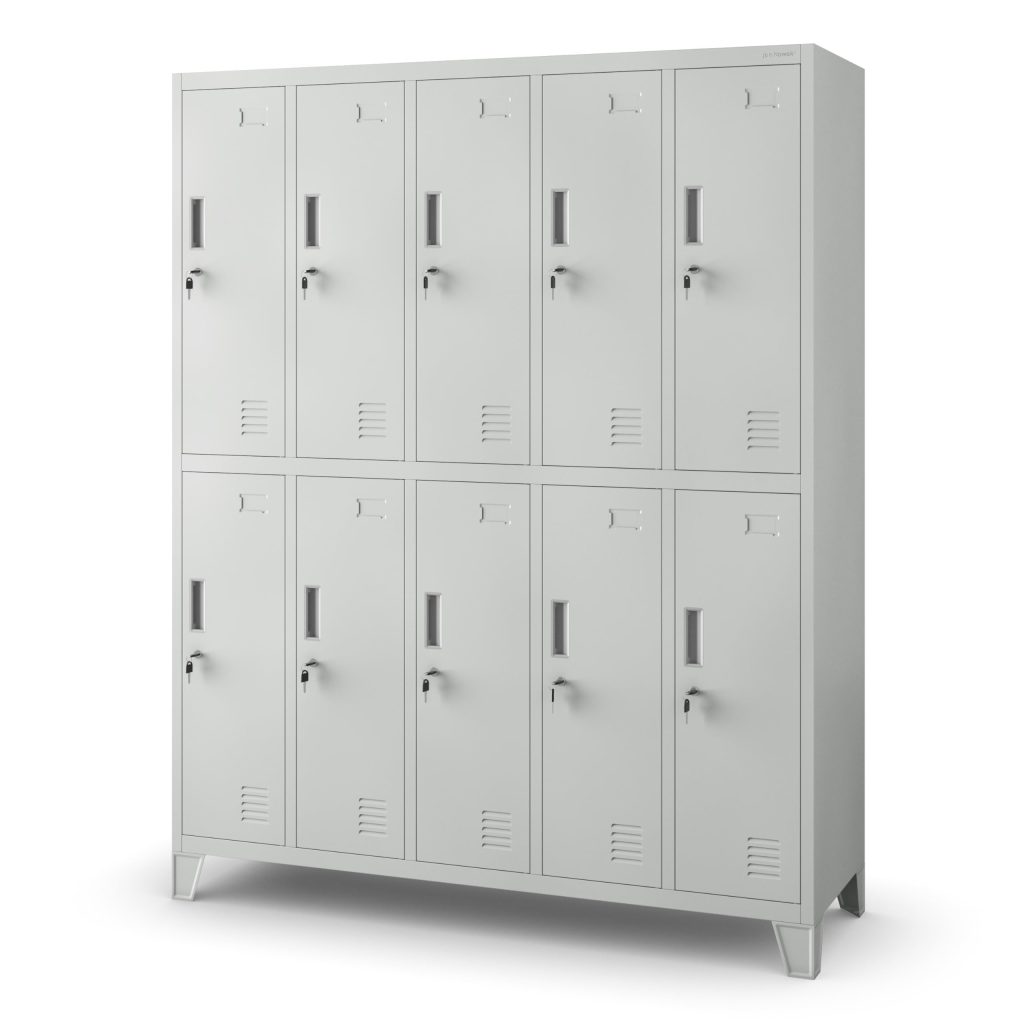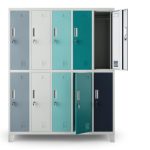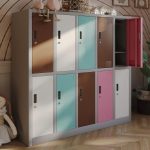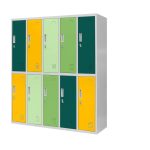Lockers play a crucial role in various environments such as schools, offices, gyms, and recreational centers. They provide a safe and convenient place to store personal belongings, help organize space, and protect valuable items. With so many materials available—steel, wood, plastic, and stainless steel—it can be difficult to decide which material is the best. In this article, we will explore the advantages and drawbacks of each material to help you choose the ideal locker for your environment.

Factors to Consider When Choosing Locker Materials
Before understanding lockers made from different materials, let's first examine the factors that you should consider in advance when selecting locker materials:
Durability: Lockers get frequent use, so durability matters. The material should resist heavy usage, impacts, and environmental conditions without degrading quickly.
Security: The primary purpose of lockers is to keep items safe. Different materials offer varying levels of security, which can influence their suitability for storing valuable or sensitive items.
Appearance and Design: A locker should blend well with its surroundings, whether in a sleek, modern office, a home gym, or a traditional school. The material’s appearance can influence the overall aesthetic of the space.
Price and Value: Consider the material's initial cost and its long-term durability. Balance the upfront cost with the locker’s longevity and performance.
Environmental adaptability: Choose the material based on the specific environment. For example, materials suitable for dry areas differ from those suited to humid environments, and some materials perform better in specific settings.
4 Types of Locker Materials
The main materials used for lockers include steel, wood, plastic, and stainless steel. Each material has unique characteristics and applies to specific scenarios.
Steel locker
Steel lockers usually use 0.5 to 1.2mm high-quality cold-rolled steel plates, which are electrostatically sprayed, providing rust-proof, moisture-proof, and deformation-resistant features. They commonly come in matte white or grayish white but can be customized to different colors. Steel lockers are sturdy, durable, and moderately priced, making them suitable for various environments—especially in industrial and public settings like offices, schools, hospitals, hotels, homes, factories, and government buildings.
Wooden lockers
Wooden lockers come in pure wood and composite board types. Pure wood lockers are durable and have a premium texture, but they tend to be more expensive and difficult to relocate. Composite board lockers are cheaper but less durable. Wooden lockers are ideal for environments that need a natural, warm aesthetic, such as retro or upscale spaces. However, they require moisture-proofing and pest control to prevent deformation and infestations.
Plastic lockers
Plastic lockers (such as those made of ABS materials) offer advantages like moisture-proofing, rust-proofing, impact resistance, heat resistance, acid resistance, and alkali resistance. These features make them ideal for special places such as swimming pools. Plastic lockers are lightweight, have long service lives, and are cost-effective. However, quality varies, so you should choose higher-quality products to avoid deformation or cracking.
Stainless steel lockers
Stainless steel lockers are resistant to corrosion, moisture, and insects. They have a sleek, high-end appearance, making them perfect for modern settings like swimming pools. Stainless steel lockers are easy to clean and maintain but come at a higher price point.
Performance comparison table of locker materials
| Comparison Dimension | Steel Locker | Wooden Locker | ABS Locker | Stainless Steel Locker |
|---|---|---|---|---|
| Core Material | 0.6~0.8mm cold-rolled steel plate, electrostatic spraying + galvanized rust prevention | Solid wood/Composite board, contains adhesive | ABS engineering plastic | 304 food-grade stainless steel |
| Durability | Impact strength of 580MPa, no deformation after 100,000 opening/closing tests | Solid wood impact strength 120MPa, composite board prone to cracking | Moderate impact resistance, brittle after aging | Impact strength of 600MPa, salt spray corrosion-resistant |
| Moisture/Corrosion Resistance | Galvanized layer + moisture-proof coating, no rust when humidity > 85% | Swelling rate 3-5% when humidity > 65%, prone to mildew | Waterproof and moisture-proof, but easy to deform at high temperatures | No rust after 1000-hour salt spray test, A1 fire-resistant |
| Load Capacity | Single shelf ≥200kg, reinforced beam design | Solid wood load ≤100kg, shelves prone to bending | General load <50kg | Single shelf load ≥250kg, stronger support structure |
| Maintenance Cost | Nano anti-dirt coating, wipe with a wet cloth | Regular waxing to prevent cracking, annual maintenance cost about 50 RMB | Surface scratches easily, needs to be replaced when aging | No special maintenance, stubborn stains need neutral cleaner |
| Environmental Impact | Formaldehyde release ≤0.01mg/m³ (SGS certified) | Density board formaldehyde exceeds 36%, E1 grade or below risk high | Non-toxic and odorless, but contains plasticizers | Zero formaldehyde release, medical-grade antibacterial surface |
| Service Life | Over 15 years, 10-year warranty on hinges | Board-type cabinets 7-9 years, solid wood cabinets 15 years (needs maintenance) | 5-8 years (UV accelerated aging) | Over 10 years |
| Suitable Scenarios | Gyms/Laboratories/Home use, flexible switching between industrial style and lacquered finish | Only suitable for dry environments, limited style options | Temporary places/Small bathrooms, cost-effective option | High-end bathrooms/Medical locations |
| Price (1.8m Standard Model) | 1200-2500 RMB (best value for money) | Solid wood cabinets 3000-8000 RMB, composite board cabinets 800-1500 RMB | 500-1200 RMB | 4000-8000 RMB (greatly influenced by manufacturing complexity) |
According to the five factors mentioned above, the selection of locker materials needs to be considered in advance. The performance of lockers of different materials is as follows:
| Material | Durability | Safety | Aesthetics | Price | Suitable Places |
|---|---|---|---|---|---|
| Steel | High | High | Simple | Medium | Office, Gym, School, Factory |
| Wood | Medium | Medium | Elegant | Slightly High | Office, Hotel, Home |
| Plastic | Medium | Low | Moderate | Low | Swimming Pools, Coastal Areas |
| Stainless Steel | High | High | Modern | High | Medical, Laboratories |
Conclusion
Choosing the right material for your locker depends on several factors, including the environment, security needs, and budget. Each material has its strengths and ideal uses. By evaluating your specific needs and weighing the pros and cons of each material, you can make an informed decision that ensures your locker is both functional and aesthetically pleasing.




